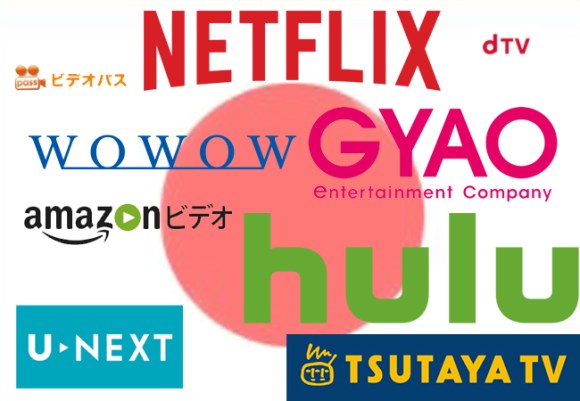
In the relatively new market of video services in Japan, one clearly stands above the rest. But you might be surprised what it is.
It’s been a long time coming, but Japan has finally embraced subscription-based video streaming services. While video rental stores had already been wiped clear off the map in many other countries, they seemed to have a tenacious presence in Japan, and a few of the remaining major chains can still be found relatively easily today.
▼ With its living and breathing video rental stores,
a visit to Japan can be like visiting Colonial Williamsburg
But with Netflix’s entrance to the Japanese market in September of 2015, the race has finally gotten into full swing. According to a report by Marketing Research Camp, 16.5 percent of Japanese residents use these services. The way in which this pales to the 53 percent usage in the USA should show how far behind we still are though.
So with this new market burgeoning, many contenders have come out of the woodwork. Hulu got a huge head start in Japan, launching way back in 2011. But it hasn’t been as aggressive as Netflix and suffered a few set backs last year when the company changed hands, including a very unpopular new interface.
▼ Hulu Japan boasts over 40,000 titles. Damned if I can figure
out how to find where most of them are though.
Video rental giant Tsutaya has also ventured into the streaming business but hasn’t really seemed to attack it with the same gusto that they had with physical rentals. And then there’s a whole slew of services from Japanese telecom companies like SoftBank and J:Com, some with amusingly hard-to-pronounce names.
▼ “Me? Nah, I’m just gonna WOWOW, GYAO, n’ chill tonight.”
And who among all these competitors is on top? Let’s look at the ranking:
In Japan, Amazon Prime Video is by far the most used video streaming service, which is mind-boggling to me because after signing up for a trail version, I quit after about ten minutes. Its selection and options were rather limited, and I was even asked to pay additional fees to watch certain titles.
The situation in Japan is nearly the opposite of the situation in the U.S. according to data from Statista:
If I had to venture a guess, I’d say that Amazon Japan is having an all too easy time reeling in pre-existing Amazon users. And given Japan’s overall on-demand video naiveté, people probably just assume the others are more or less the same and stick with it.
The Japanese standings of Hulu and Netflix likely largely boil down to timing. Netflix has made a fairly wide advertising campaign, and yet when those who do not subscribe to any service were asked which company they’d consider, Netflix could only get 23.6 percent of people compared to Hulu’s 33.3 percent and Amazon’s 30.6 percent. Hulu simply seems more entrenched in the Japanese consciousness at this point.
Here’s what those online had to say about it:
“Over 50 percent is pretty amazing.”
“Amazon’s line-up is pretty crappy and good titles get taken down quickly.”
“Hulu’s UI is garbage.”
“Definitely in terms of quality, Netflix is the best option.”
“The Japanese Netflix original shows are garbage.”
“It’s good to have choices, but all of them are just different levels of crap, so there isn’t a big difference. So I’d go with Prime.”
“I decided to throw away my TV rather than pay 1,500 a month to NHK. Amazon Prime for 500 yen is a way better option.”
“Half of the people use Amazon, that’s hilariously embarrassing.”
It would seem a majority of comments online are praising the quality of Netflix’s content, meaning that despite the numbers, positive word of mouth is spreading. If that momentum continues then we could see American-like figures in the near future.
Comments online regarding Hulu have been less than kind recently due to their amazingly unpopular update last year. However, that still could end up working in the company’s favor. At that time, Hulu Japan became an independent entity from the American one, meaning that they could focus more deeply on the Japanese market.
Netflix seems more about content for U.S. audiences, despite the Americanized Death Note ironically playing better with Japanese viewers. If Hulu can use their home-field advantage and dig up some attractive Japanese-oriented original content, they may win this yet. It’s still very early in the game, so anything can happen.
Source: President Online, My Game News Flash, Statista
Images: SoraNews24